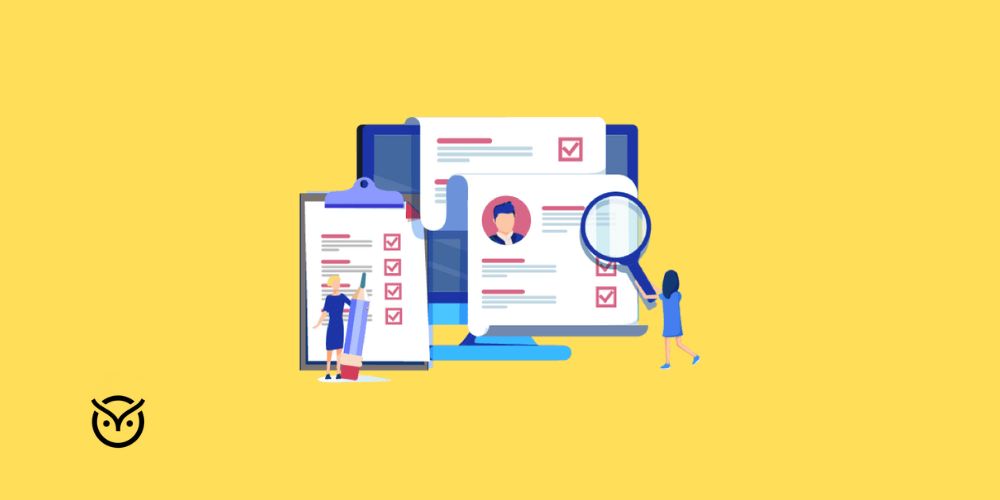
TL;DR
- Long-term strategy to attract, evaluate, hire
- Beyond recruitment: forecast, brand, source, screen, onboard, optimize
- 8 steps: plan, brand, source, screen, interview, select, onboard, track
- Use ATS, clear roles, talent pools, training, automation, feedback
- Improve: audit, align teams, improve experience, use data, refresh brand, upskill
- Goal: hire faster, better, retain talent, align with goals
Hiring the right people isn’t just about filling roles anymore. It’s about building a pipeline of future leaders, culture champions, and problem-solvers. But here’s the catch: many companies still treat hiring as a one-time event rather than a long-term strategy. Without a strong talent acquisition process, businesses risk losing top candidates to faster-moving competitors or hiring mismatches that cost time and money. If you’re feeling stuck in a messy hiring cycle, you’re not alone.
The good news? You can fix it. With the right systems in place from sourcing to onboarding, you can turn hiring chaos into clarity. In this blog, you’ll learn what the talent acquisition process really involves, the key steps of the talent cycle, and how to elevate your talent acquisition operations for long-term success.
What’s Broken in Your Hiring?
Take this 30-second checkup to reveal your hiring blind spots.
What is the Talent Acquisition Process?

The talent acquisition process is the strategic approach companies use to find, attract, evaluate, and hire top talent. Unlike traditional recruiting, which often focuses on filling immediate vacancies, talent acquisition looks at the bigger picture. It’s about forecasting hiring needs, building relationships with passive candidates, and aligning recruitment with long-term business goals.
It includes everything from employer branding and job advertising to screening, interviewing, and onboarding. Done right, it creates a seamless experience for candidates and a strong return on investment for companies. According to a report by SHRM, the average cost-per-hire is over $4,700, and that doesn’t include onboarding and training expenses. A well-structured talent acquisition process can significantly reduce those costs by improving efficiency and retention.
Understanding the talent acquisition job responsibilities is key here. These typically include workforce planning, employer branding, candidate sourcing, talent pipelining, and data-driven decision-making. It’s a blend of strategy, operations, and people skills, and it’s evolving fast.
What Talent Acquisition Isn’t
8 Talent Acquisition Processes You Should Know

Understanding each stage of the talent acquisition process helps you build a repeatable, scalable system for hiring. Below are the eight essential processes every company, startup, or enterprise should master.
1. Workforce Planning
Before you even post a job, you need to know what roles you’ll need and when. Workforce planning is about aligning hiring needs with your business goals. It’s the first step in the talent cycle, helping companies forecast skills gaps and future talent demand.
2. Employer Branding
Most people won’t apply unless they like what they see. In fact, Glassdoor states that 75% of the job seekers are more likely to go for a role if the company puts effort into its brand. A strong brand doesn’t just attract candidates. It pulls in the ones who actually want to work with you.
3. Sourcing Candidates
This step involves searching for potential candidates through job boards, referrals, social platforms, and professional networks. Effective talent acquisition operations use automation tools, AI filters, and Boolean searches to identify top talent faster.
4. Candidate Screening
Screening helps you avoid spending time on the wrong candidates. It’s your first filter. You go through resumes, have quick phone calls, and maybe throw in a short test to see if they’ve got the right skills, experience, and attitude to fit the team.
5. Interviewing
Interviews go a lot better when you’ve got a plan. Asking the same questions and jotting down quick notes or scores helps you stay fair and actually remember who said what. It just makes the whole decision easier.
6. Selection & Offer Management
Found the right person? Time to make an offer. But it’s not just about the paycheck. The best offers match what the candidate really cares about, whether it’s flexible hours, chances to grow, or meaningful work.
7. Onboarding
This is a critical (and often overlooked) part of the talent acquisition process. A strong onboarding experience can boost retention and productivity.
8. Data & Optimization
Track everything. Time-to-hire. Source-of-hire. Where candidates drop off. Keeping an eye on these numbers is really important to see what’s working and where we can do better.
Match the Process to Its Description
Drag the orange terms onto the correct descriptions.
How to Put These Talent Acquisition Processes into Action

Just follow these simple steps to get these processes flowing.
1. Centralize Your Hiring Tools
Still juggling spreadsheets and inbox chaos? It’s time to plug into an ATS. It brings all your hiring activity into one clean dashboard. That means smoother talent acquisition operations and way less manual busywork.
2. Create Clear Job Descriptions
Job descriptions should reflect not just the responsibilities, but also your culture. Make sure to align them with your talent acquisition job responsibilities, so everyone on the hiring team is on the same page.
3. Build Talent Pools
Don’t wait for a job opening to look for candidates. Use LinkedIn, alumni networks, and past applicants to build a proactive talent pipeline, a foundational element of the talent cycle.
4. Train Your Hiring Managers
Most delays and mistakes happen when hiring managers aren’t aligned. Provide training on interviewing techniques, unconscious bias, and candidate communication to smooth the process.
5. Automate Where It Makes Sense
Stop wasting time on tasks you can automate. Use tools like Calendly, chatbots, or AI resume screeners to handle the busywork. Your talent acquisition process gets faster, cleaner, and you still stay human where it counts.
6. Collect Candidate Feedback
After interviews, ask candidates what worked and what didn’t. This helps you uncover blind spots in your current talent acquisition process and identify quick wins.
Talent Acquisition Implementation Checklist
Tick off each action step. 0/6 completed
How to Improve Your Talent Acquisition Process

Even if your current hiring setup works “well enough,” chances are it’s leaving top talent behind or slowing you down. Here’s how to improve your talent acquisition process without starting from scratch.
1. Audit Your Current System
Before you fix anything, know what’s broken. Check your time-to-hire, offer acceptance rates, and how candidates feel about the process. These numbers expose the weak spots in your talent acquisition operations so you know exactly where to improve.
2. Strengthen Collaboration Between Teams
Hiring isn’t just HR’s problem. Bring in team leads and department heads early. When everyone’s aligned, you’re hiring for real needs, not guessing job titles. It also helps define talent acquisition job responsibilities that actually move the business forward.
3. Enhance Candidate Experience
The best candidates drop out when communication is slow or unclear. Streamline your interview process, keep candidates informed, and personalize your outreach. CareerPlug found that 58% of candidates said “no thanks” to a job offer because the hiring experience was a mess. Bad vibes cost great hires.
4. Embrace Data-Driven Decisions
Use recruitment analytics to improve sourcing, eliminate bottlenecks, and understand which hiring channels perform best. These insights help future-proof your talent acquisition process.
5. Refresh Your Employer Brand
Your employer brand speaks louder than your job ad. Keep your website, job pages, and team testimonials updated to reflect your culture and values. A modern brand makes your talent cycle more attractive to in-demand professionals.
6. Invest in Upskilling Recruiters
The hiring landscape is evolving fast, think AI tools, remote roles, and diversity metrics. Train often. Stay sharp. Hire better.
Is Your Hiring Process Costing You?
Conclusion
Winning teams are built, not found. A strong talent acquisition process helps you hire with purpose, not guesswork. When your strategy is clear and your systems run smoothly, you bring in people who drive results. Now’s the time to review your process, tighten what’s loose, and focus on simple changes that create long-term value. Better hiring starts with better systems, and you’re ready to make it work.




